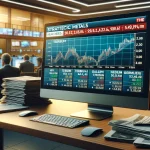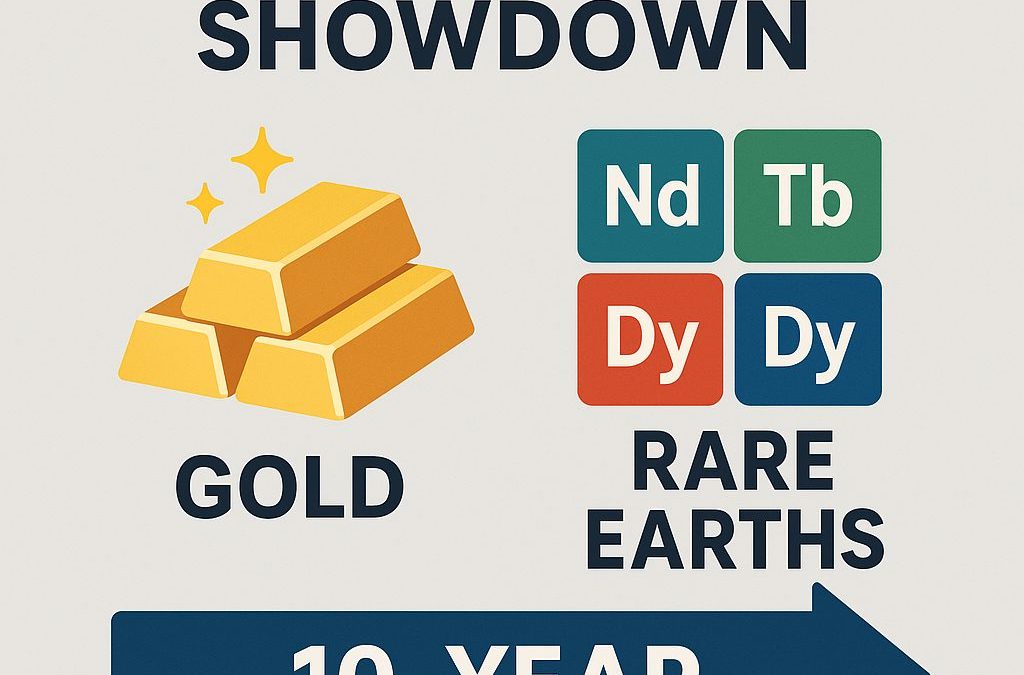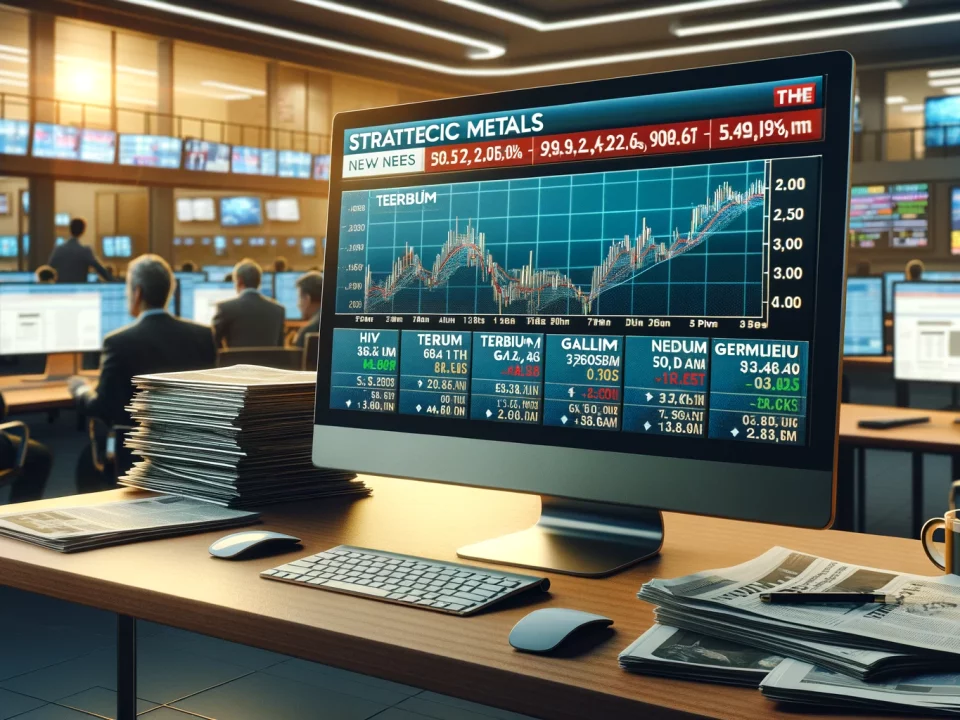
Weekly News Review April 28 – May 4 2025
May 4, 2025
Weekly News Review May 5 – May 11 2025
May 11, 2025Investors have long turned to gold as the ultimate store of value, but a new contender is rising: rare earth elements (REEs). In this post, we’ll explore the demand drivers, supply constraints, and market dynamics that could determine which of these metals shines brightest by 2035.
The Timeless Allure of Gold
Gold’s reputation as a safe haven is hard-earned. Central banks remain voracious buyers, adding over 2,000 tonnes in just two years, bolstering global reserves and underpinning gold’s monetary role. Production is steady but limited, with annual mine output of roughly 2,500 tonnes adding only 1–2% to existing above-ground stocks. When uncertainty strikes, be it inflation, geopolitical tension, or market turmoil, gold’s price typically rallies, offering a proven hedge against systemic risk.
Key takeaways:
- Demand mix: Jewelry (~50%), investment bars/ETFs (~40%), industry (~10%).
- Price volatility: Moderate; spikes correlate with macro shocks.
- Supply growth: Predictable, low single-digit annual increases.
Rare Earths: The Engine of Modern Technology
Rare earths aren’t actually rare in the Earth’s crust, but they’re geologically dispersed and tough to extract economically. Elements like neodymium, dysprosium, and terbium power electric-vehicle motors, wind-turbine magnets, and myriad high-tech applications. China controls about 85% of the processing capacity, creating potential choke points. Meanwhile, global demand for REEs is set to surge, driven by electrification, renewable energy, defense applications, and consumer electronics.
Key takeaways:
- Demand drivers: EVs, wind power, defense systems, consumer electronics.
- Supply bottlenecks: Decade-long mine development, environmental hurdles, geopolitical concentration.
- Price behavior: High volatility; can spike 20–50% on supply scares or policy shifts.
Comparing Demand Growth
| Factor | Gold | Rare Earths |
|---|---|---|
| Market Drivers | Macro uncertainty | Tech adoption, decarbonization |
| Forecasted Growth | 3–5% annual demand ↑ | 8–12% annual demand ↑ |
| Investment Impulse | Crisis-triggered | Secular, multi-sector expansion |
Gold demand tends to rise during crises but plateaus in stable times. Rare earths, on the other hand, benefit from long-term trends: every new EV or turbine adds persistent incremental demand.
Supply Dynamics at a Glance
- Gold: Mines steadily add new ounces; recycling contributes ~1,200 tonnes/year. Easier permitting, widespread mining footprint.
- Rare Earths: New projects face 10–15 year lead times and strict environmental reviews. Recycling remains in its infancy; recovering magnets from electronics is complex and costly.
Implication: Unexpected supply shortfalls in REEs can trigger sharp price rallies, while gold’s output is comparatively reliable.
Risk vs. Reward Profile
- Gold: Lower upside in bull markets (since it’s already priced for safety), minimal tail-risk in crashes.
- Rare Earths: Potential for outsized gains if electrification outstrips new supply, but also vulnerability to policy changes (e.g., export restrictions), project delays, and technological substitutes.
Investment Strategies for 2035
As you look toward 2035, the smartest approach isn’t an either-or choice; it’s a blend. Gold offers time-tested stability and a hedge against systemic risk, while rare earths sit at the heart of electrification, renewables, and cutting-edge technologies. By combining both in your portfolio, you can capture gold’s defensive shine and rare-earths’ growth potential in one cohesive strategy.
Even better, you don’t need separate providers. Through us, you can acquire, allocate, and securely store physically backed rare earth elements exactly as you would bullion gold. Whether you’re safeguarding wealth or positioning for the next wave of industrial innovation, our unified solution makes it simple to build, and maintain, a balanced metals portfolio.
Conclusion
By 2035, gold will almost certainly retain its status as the bedrock of safe-haven capital. Yet rare earths, driven by irreversible trends in decarbonization and digitalization, may deliver superior price appreciation. A balanced metals strategy can harness the complementary strengths of both: gold’s defensive shine and rare earths’ growth potential.






